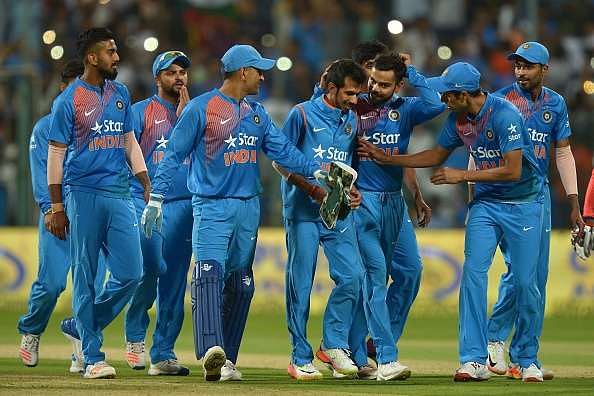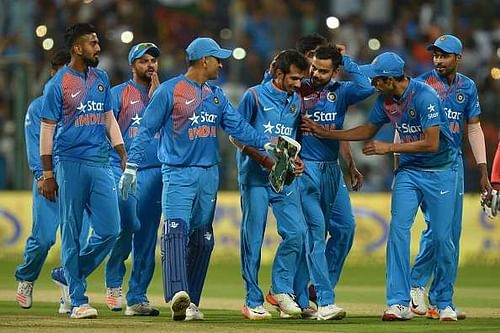
T20's problem of plenty
England recently wrapped up a long and harsh winter tour of India, finishing on the wrong side of a 2-1 T20 series result. This meant that they won all of 2 games on the tour – an ODI win (in another 2-1 loss) to go along with a win in the first T20. They had two chances to clinch the T20 series and should have finished off the job in the second game where they ended up bottling an easy chase, giving Jaspreet Bumrah the honours instead; after he bowled a sensational final over to deny the visitors the required 8 runs.
Anyway, this piece is about the first T20 game, which England won comfortably. One of the most boring T20 games in recent memory (not that T20 fixtures tend to last too long in memory); what left me wondering was Adil Rashid. Rashid, a part of the playing XI, did not bowl a single over of his leg-spin as England bowled first and restricted India to a modest 147. They then chased down the total with ease; meaning Rashid could put his feet up in the dressing room and solve crosswords as the game was being won.
Cut to about 6 months back, I was playing in a local T20 cricket league in Switzerland. Having arrived here at the start of the year, I was introduced to the club by some friends and despite boasting of no striking cricketing talent, was included in the fold for lack of enough members.
Extra Cover: Jason Roy could be the missing piece in Mumbai Indians' opening puzzle
Over the course of the season, we played home and away games, in the lush green pastures that Switzerland offered, and the experience was immensely enjoyable because of the company of good friends and some spirited power hitters that took us over the line most times. What was also revealing to observe from close quarters was the camaraderie between the teams and the thin but functional structure that held this fledgeling league together. However, I digress.
In one such game, playing away and at a rather small ground, we batted first and our top order got stuck in, putting up a handsome score. The bowlers maintained a strict line, taking occasional wickets and ensured that we won by a comfortable margin. At no point in the second innings of the game, any of our main bowlers looked to be tiring, and hence there was no need for the back-up guys (including me) to roll our arm for an over or two.
Manning the boundary line on deep cover with the batsmen preferring to target the straight, short boundary; I was also deprived of any chance of at least touching a ‘live’ ball. Only once did the batsman manage a fierce looking cut through the covers, which rolled towards the sweeping fielder on my left and as I ran to provide back-up just in case he misfielded; I could hear the skipper shout, ‘Good thinking, Ashish!’ He probably sensed that I hadn’t done much all game and felt the need to encourage me; largely perhaps to keep me interested enough to turn up for the next game.
And thus, when that game came to an expectedly tame end, 3 of us had finished the game without having required to bat, bowl or even do anything meaningful on the field. While some of that could be attributed to the quirks of Sunday League Cricket, it also boils down to the nature of T20 cricket. T20 cricket is a format created by the reduction of the length of a game (in comparison to ODI’s) while keeping resources (wickets) unchanged.
You now have 10 wickets to play over the course of a mere 20 overs and about 6-7 bowlers at hand to bowl those.
Extra Cover: Jasprit Bumrah - a sparkling example of self-belief and confidence
And that is bound to give us more Adil Rashid's in the future. Players selected as back-up’s if someone else has a bad day, but required to do not much else if everything goes to plan. Another fall-out of the T20 game is that of a massive time crunch. A team does have 10 wickets to play with, but only 120 balls to do so. That gives an average of 12 balls to every batsman.
This makes it necessary for 1 or 2 in the top order to utilise majority of this quota of deliveries, and make the most of it. If that does not happen, and if a batsman ends up dragging his feet even a bit, there is a danger of a situation where every incoming batsman from then on needs to slog from the go. And that is where the game is reduced to a farce, and you have collapses like England’s in the deciding T20 (8 wickets for 8 runs).
It seems harsh but should be pointed out that despite playing two good looking knocks in the last two games, Joe Root dawdled at crucial times to put a handbrake on the chase; and showed that even a short period of indecision can prove costly in the time-crunched world of T20 cricket.
Anyway, more on it some other time. For now, it is safe to say that T20 cricket is a conflicting beast. There is a lot of talk of how its fast-paced nature has meant fitter cricketers eager to throw themselves around on the field. But if it continues to produce journeymen like the above, it also reaffirms old beliefs of a lazy, recreational pastime rather than a full-blooded sport.


